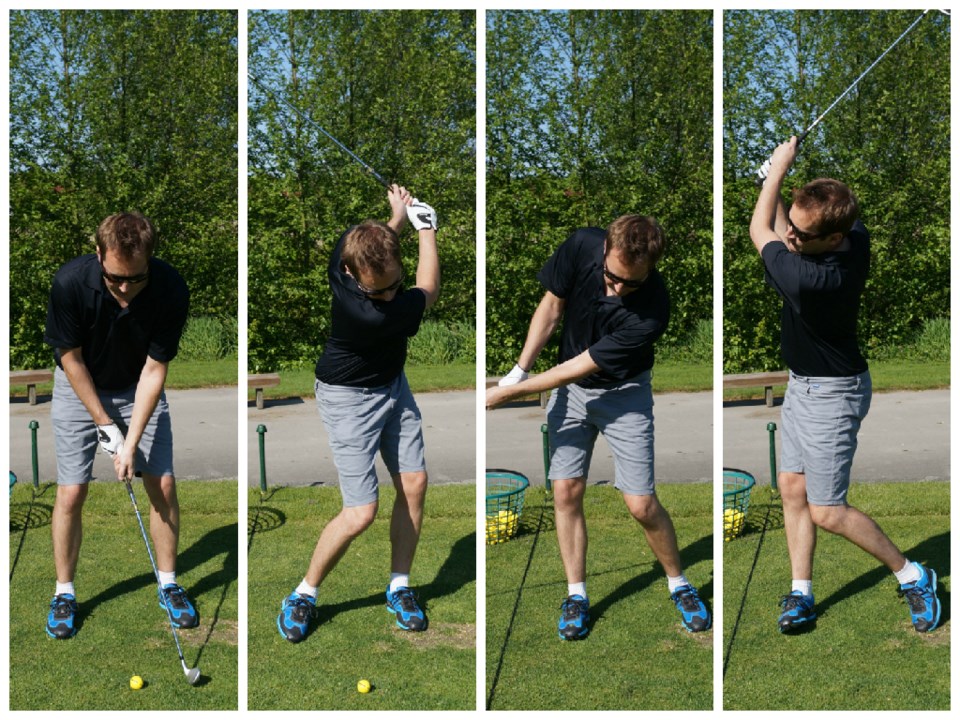The Richmond Country Club was founded in 1958 as a Jewish-friendly place to play golf. To this day, it remains kosher-friendly, so head pro Mark Strong excused his commentary when I asked whether I should be taking divots with each shot.
“Basically, you want bacon strips, not pork chops,” said Strong on our sixth week of lessons on a brilliantly sunny Friday afternoon in south Richmond.
In other words, we want to be following through on the ball, just underneath it, so that a thin divot is pulled out on the follow through.
Bacon strips.
If your divots are chunky, like pork chops, you’re clearly not getting good contact on the ball.
All this came after I delivered a Costco package of pork chops to the foreground of the driving range, before Strong came to my assistance.
So, how do you assure yourself of firm contact that creates a small divot, just after the placement spot of the ball?
Well, Strong said there are a lot of things, but let’s touch on one — tempo.
I had never heard this term before, but guessed it had to do with swing speed.
Indeed, tempo is how fluid your swing is. The key is to be consistent.
One of my problems is that I think I have to swing harder on a shot to get it further. This messes up my tempo and I will often end up striking the ball poorly.
Strong said to get into the right tempo, swing an iron back and forth, like a pendulum, before starting your round. This is also a good way to limber up.
You should be striking the ball when your weight shifts from your back foot to your front foot.
Strong told me I have good tempo when I connect, but it’s about being consistent.
As I noted last week, I was having trouble gauging how far I could hit the ball. On some shots I’d ease up, while on others I would swing too hard.
Strong took me aside and asked me to state how far I could hit each iron. As it turned out I was underestimating how far my higher irons and wedges will take my ball.
I couldn’t imagine my sand wedge going 100-plus yards, but when I picked a flag at that distance, at the driving range, I was getting there with solid, high-tempo shots; understand your clubs and there will be one less reason to mess up your tempo.
We also took a good 20 minutes assessing my lower irons. I personally hate the three-iron and it’s probably a good thing I’ve lost it. So we pulled out the four-iron.
Strong talked about my posture and suggested I pull my hips in a bit more. I tried to remember the tips he gave me when driving the ball (back shoulder in, hips a bit forward, and a stronger grip) and sure enough I was connecting fairly well — about 190 yards — when I put it all together.
I said “when” because that’s the whole thing about golf — if it isn’t all put together you end up in shambles.



